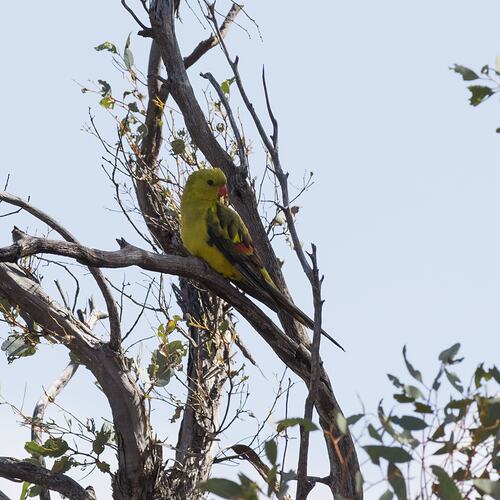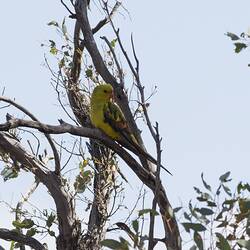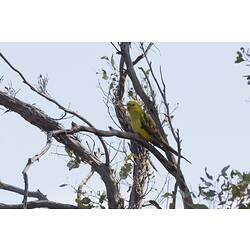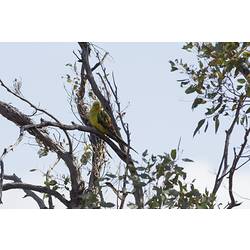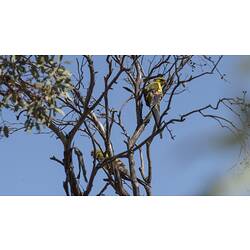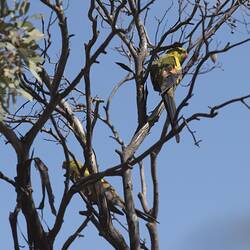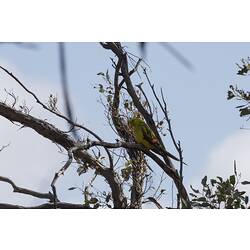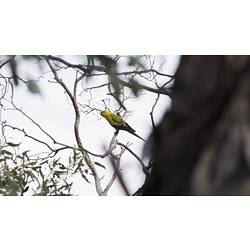General Description
A large, slim parrot with a long, dusky tapering tail and back-swept wings. Males are mostly yellow, with blue-black wings and tail. There is a prominent yellow shoulder patch and red patches in the wings which show up against the dark wings in flight. The bill is deep red or pink. Females and juveniles are duller olive-green with pinkish, duller wing patches. Body size up to 43 cm.
Biology
The declining eastern population is reliant upon remnant mallee patches near their tree hollows. Movement of the birds is poorly understood, but it is considered nomadic or resident, probably linked to the availability of water. Its diet consists of seeds of grasses and cereal crops, especially wheat. It also eats buds and flowers, insect larvae, psyllids and lerps. It forages in pairs or small parties, usually on the ground, but also in the canopy of trees or in spilled grain on the ground. Its call is a loud and harsh 'carrak, carrak', but it also makes soft twittering contact calls. Females incubate their eggs in nests in hollow branches or holes in large old or dead trees near water. The males feed the females during incubation. The eastern subspecies, Polytelis anthopeplus monarchoides is considered to be Vulnerable.
Distribution
South western New South Wales, north western Victoria and into South Australia.
Habitat
The eastern population is found in woodland, mallee and floodplain Eucalyptus camaldulensis. The western population is found in open forest and woodland, especially Salmon Gum, E. salmonophloia.
More Information
-
Animal Type
-
Animal SubType
-
Brief Id
Large, slim parrot, mostly yellow with long blue black tail, yellow shoulder patch and red bill.
-
Colours
Yellow, Blue, Black, Red, Green
-
Maximum Size
42 cm
-
Habitats
-
Diet
Omnivore
-
Diet Categories
Seeds, Grasses
-
Endemicity
-
Commercial
No
-
Conservation Statuses
CITES: Trade restrictions (Appendix II), FFG Threatened List: Vulnerable, EPBC Act 1999: Vulnerable, IUCN Red List: Least Concern
-
Taxon Name
-
Common Name
Regent Parrot
-
Kingdom
-
Phylum
-
Subphylum
-
Class
-
Order
-
Family
-
Genus
-
Species Name
anthopeplus
